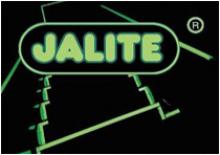Proactive Over Reactive Mentality In Business
Proactive Over Reactive Mentality In Business
The Fire & Rescue Services attend more than 30,000 fires in the workplace each year. Lives are lost, thousands are injured and the economic costs mean many businesses never re-open.
Organisations need to take action – not only to protect their staff but also their business; fire continues to impose significant costs on the economy of England and Wales. In 2003, the total cost was estimated at £7.7 billion and the average cost of a fire in a commercial building at £58,100, comparing these figures to the cost of preparing your organisation demonstrates a new perspective in cost effectiveness.
In the 1993 bomb attack in the underground garage of the World Trade Centre a total blackout descended on the thousands of occupants within. Generators providing power to emergency lighting were also destroyed forcing the occupants to evacuate in complete darkness. To fully evacuate in darkness it took approximately four hours – they were fortunate to have that much time.
Following this attack Photoluminescent paint was applied to the stairwells to provide visual guidance to occupants for evacuation without relying on electricity. 9/11 followed and the Photoluminescent paint system was put to the test – at least one third of the survivors interviewed recalled that the system was useful and reassuring, aiding their evacuation.
It was the 1993 bomb attack which provided the motivation for management to take action and install the Photoluminescent stairwell system. Had this not have occurred Photoluminescent material may not have been installed to aid the 9/11 evacuation. In 9/11 the towers fell just one hour after the planes impact demonstrating that the previous 4 hour evacuation would not have been sufficient. The first bombing may have saved many lives in 9/11 due to management being prepared and installing Photoluminescent way guidance systems.
Whether a fire starts as a result of terrorism or a cigarette butt the results are the same; rapid escalation, severe smoke, impaired vision and confusion.
In darkness a building can become a labyrinth and under the duty of care of those responsible for the occupants must ensure all staff visitors and members of the public exit safely.
The independence of Photoluminescent products from generators and power enables them to be effective in all scenarios. The Photoluminescent properties make them conspicuous in power loss and when smoke would obscure other emergency lighting systems creating a safe efficient escape route for all occupants.
On 24th May 2007 the International Code Council voted to revise the International Building Code to include New York City’s standard requiring the inclusion of Photoluminescent path markings in the stairwells of high rise buildings.
Extensive research conducted by Dr Guylene Proulx, Senior Researcher of the National Research Council of Canada, has demonstrated the benefits of Photoluminescent emergency way guidance systems. While Photoluminescent Material was virtually unknown in North America in the early 1990’s, Dr Proulx knew of the product, having completed part of her PhD in architectural planning in England. Guylene’s extensive research and involvement within the industry includes participation in the 1993 World Trade Centre bombing investigation, to studying the evacuation process in the aftermath of 9/11. Guylene Proulx and the NRC Institute for Research also conducted the first controlled study of Photoluminescent wayguidance systems during an evacuation enabling results to aid development of current standards.
The prevailing issue in fire safety management is the re-active management ethos. It is what has been termed ‘Management by Disaster’ by Dr Proulx and is exhibited by companies and government departments alike.
Significant events or disasters highlight a weakness in the current legislation which results in improvements, yet we cannot rely on a smaller tragedy to prepare us for a larger one. The World Trade Centre is a good example of where an event highlighted an inefficiency in the fire safety precepts of the time. Although the improvements made were commendable they were introduced only in reaction to a significant event. Foresight should be taken within all organisations to ensure precautions are in place prior to any emergency event, had some careful, simple and logical contingency planning been considered surely the weakness of the un-illuminated stairs would have been highlighted prior to the 1993 bombings.
The Regulatory Reform Order encourages preparation via the Fire Risk Assessment, identifying potential risks and taking action to remove or reduce these helps prepare an organisation.
Time and time again we are shown of the need for beyond ‘minimum requirements’ in fire safety. Removing the ‘It will never happen to us’ mentality and promoting proactive precautions through business continuity management and correct fire safety measures is simply good business sense.
It is only when we are reminded in the most shocking ways that disaster can happen anytime anywhere and especially to those we expect to be most prepared for it, do we think that perhaps, just perhaps… it can happen to us.
For further information regarding Photoluminescent products and your requirements contact;


